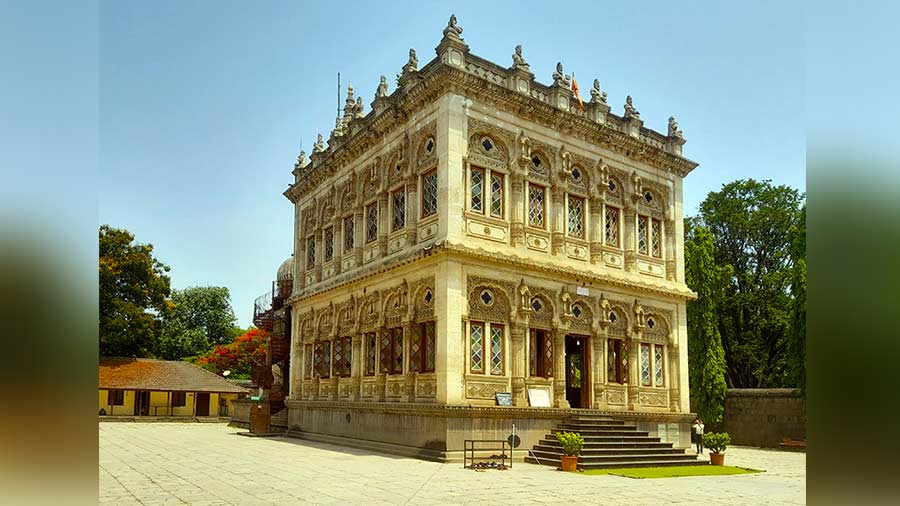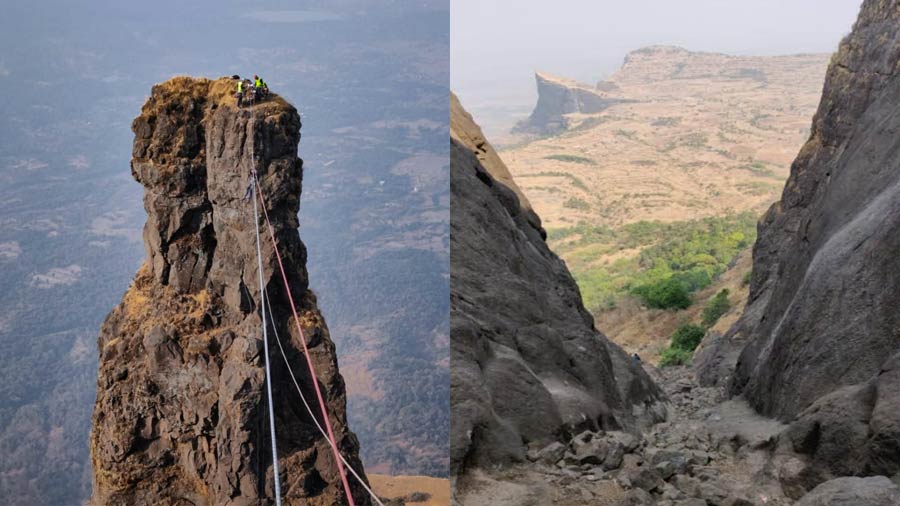For centuries, Pune (then Poona), served as the seat of Maratha power, so it’s no surprise that the city still has its share of Maratha heritage. One of the most prominent Maratha monuments that the city boasts of is the Shinde Chhatri and strangely, it has more of Gwalior (in present day Madhya Pradesh) connect.
In fact, the word Shinde is a mis-pronunciation of Scindia and has a connection with the late Indian politician Madhav Rao Scindia. The Shinde Chhatri is a memorial cenotaph of Mahadaji Shinde, ancestor of Madhav Rao.
Mahadaji Shinde was a Maratha statesman and ruler of Ujjain in central India. Mahadaji was instrumental in resurrecting Maratha power in north India after the Third Battle of Panipat in 1761, and rose to become a trusted lieutenant of the Peshwa Madhavrao I.
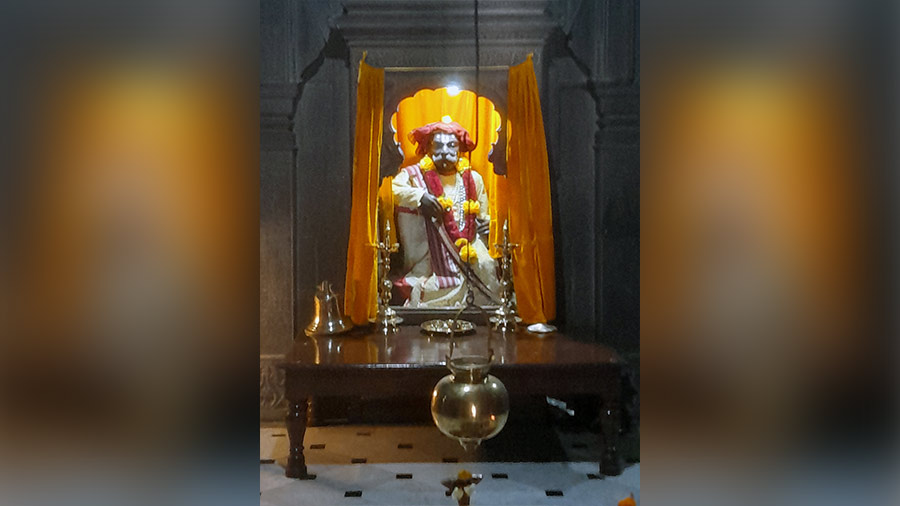
The statue of Mahadaji Shinde inside the Chhatri
William Dalrymple mentions of him in his best-selling book The Anarchy: The Relentless Rise of the East India Company: “(Mahadaji Shinde was a) Maratha chieftain and statesman who was the most powerful Indian ruler in northern Hindustan for twenty years, from the 1770s onwards…. he was a shrewd politician who took Shah Alam under his wings from 1771 onwards and turned the Mughals into Maratha puppets.”
Today, his memorial chhatri stands in the Wanawadi area of south Pune. Just before his death, Mahadaji Shinde had come up with a Shiva Temple in the same location. After his death on 12 Feb 1794, Mahadaji Shinde was cremated in front of the temple. His ashes were kept safely in a memorial or a samadhi. The small domed pavilion still stands in the complex of Shinde Chhatri.
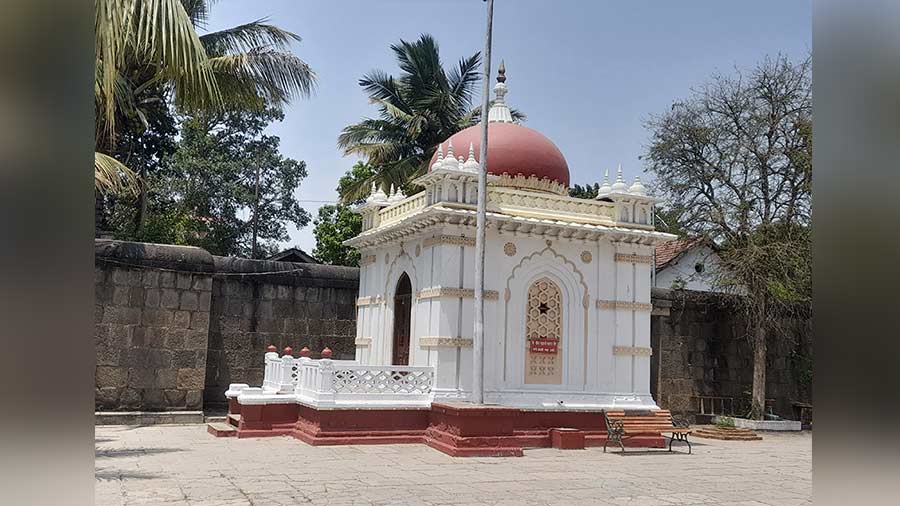
The pavilion where the ashes of Mahadaji Shinde was initially kept
Later, the adopted son of Mahadaji Shinde, Daulat Rao Shinde initiated the construction of a pavilion in honour of his predecessor. But constant civil wars among the Marathas prevented the construction to go beyond the plinth level. It was only in 1910 that the construction was restarted by Madho Rao Scindia, the grandfather of Madhav Rao Scindia. It resulted into a spectacular two storied flat roofed ornate pavilion, built in Rajasthani style, complete with intricate sandstone ornamentation.
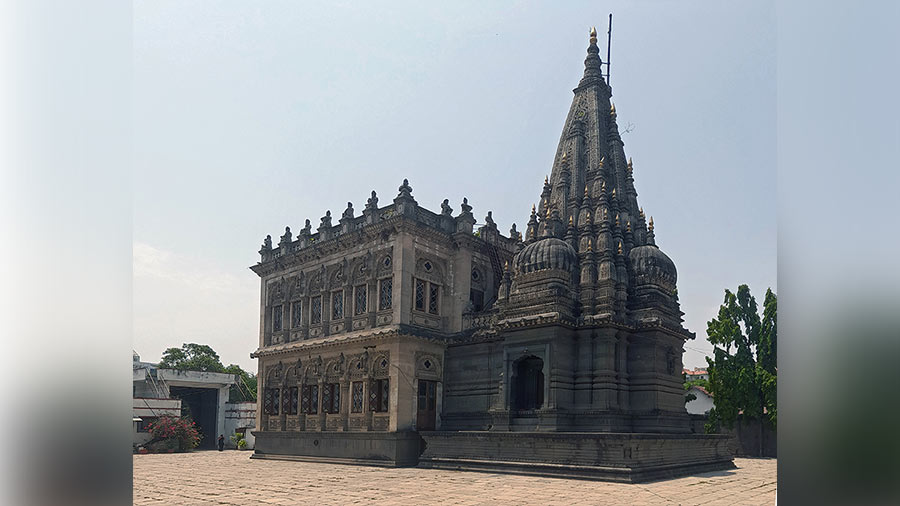
The Shiva temple (right) and the 'chhatri' (left)
Today, the temple and the chhatri stand side by side and since they were built over a century apart they have their distinct style of architecture. The Shiva Temple has a distinctive Khajuraho style architecture, while the pavilion chhatri has an Anglo-Rajasthani style. Both have their share of ornamentation with the chhatri having stained glass windows topped with recessed cusped arches along with other floral and geometric ornamentation.

The interior of the 'chhatri'
The interior of the Shinde Chhatri is approached through a flight of stairs from the eastern side. The interiors are complete with decorative pillars supporting colourful cusped arches. On the wall, we see portraits of different members of the Scindia family. The far end of the structure is the seated statue of Mahadaji Shinde. The upper story has a balcony wrapping around three sides of the inner walls. Apart from the temple and chhatri the complex also houses a domed pavilion, which once held the ashes of Mahadaji Shinde and another small temple.
